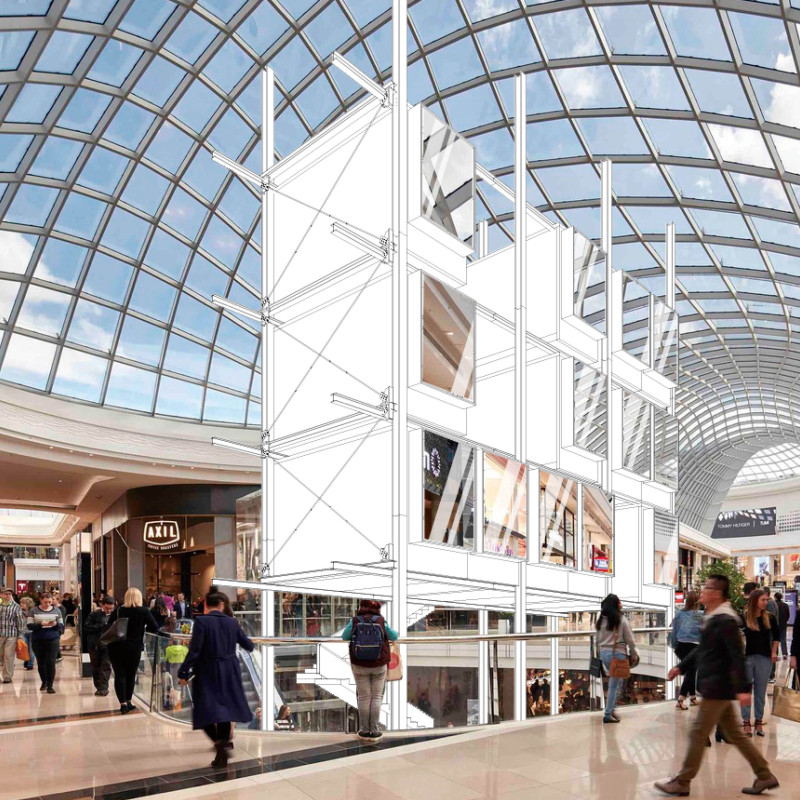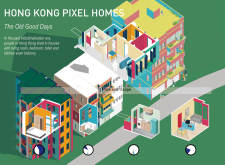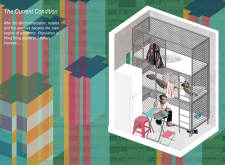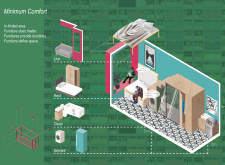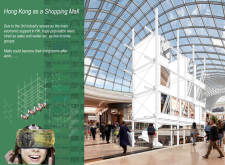5 key facts about this project
### Overview and Intent
Located in Hong Kong, the Pixel Homes project aims to address the challenges of urban living amidst the city's historical transition from industrialization to modernity. It seeks to reflect on the evolution of residential spaces, juxtaposing past communal living experiences with contemporary urban density issues. The design responds to the pressing need for spatial efficiency while fostering a sense of community within a densely populated environment.
### Spatial Strategy and Community Integration
The design introduces a series of colorful, modular housing units termed "pixel homes," each representing a self-contained habitat. Emphasizing a modular approach, spatial configurations prioritize flexibility and adaptability to maximize living area while accommodating diverse lifestyles. The interplay between private and communal spaces is thoughtfully considered, showcasing shared amenities that promote social interaction in an urban setting. The project illustrates minimalistic yet functional living environments, where every design element serves a purpose, ensuring comfort without compromising space.
### Materiality and Environmental Considerations
The project incorporates a variety of materials aligned with its modular concept. Reinforced concrete, metal frames, and extensive glazing are fundamental to the design, facilitating natural light and views while maintaining structural integrity. Additionally, the integration of eco-friendly materials, such as potential green roofs, reflects a commitment to sustainability. This approach not only enhances aesthetic appeal through a vibrant color palette but also addresses environmental concerns, reinforcing the connection between housing design and ecological responsibility.


